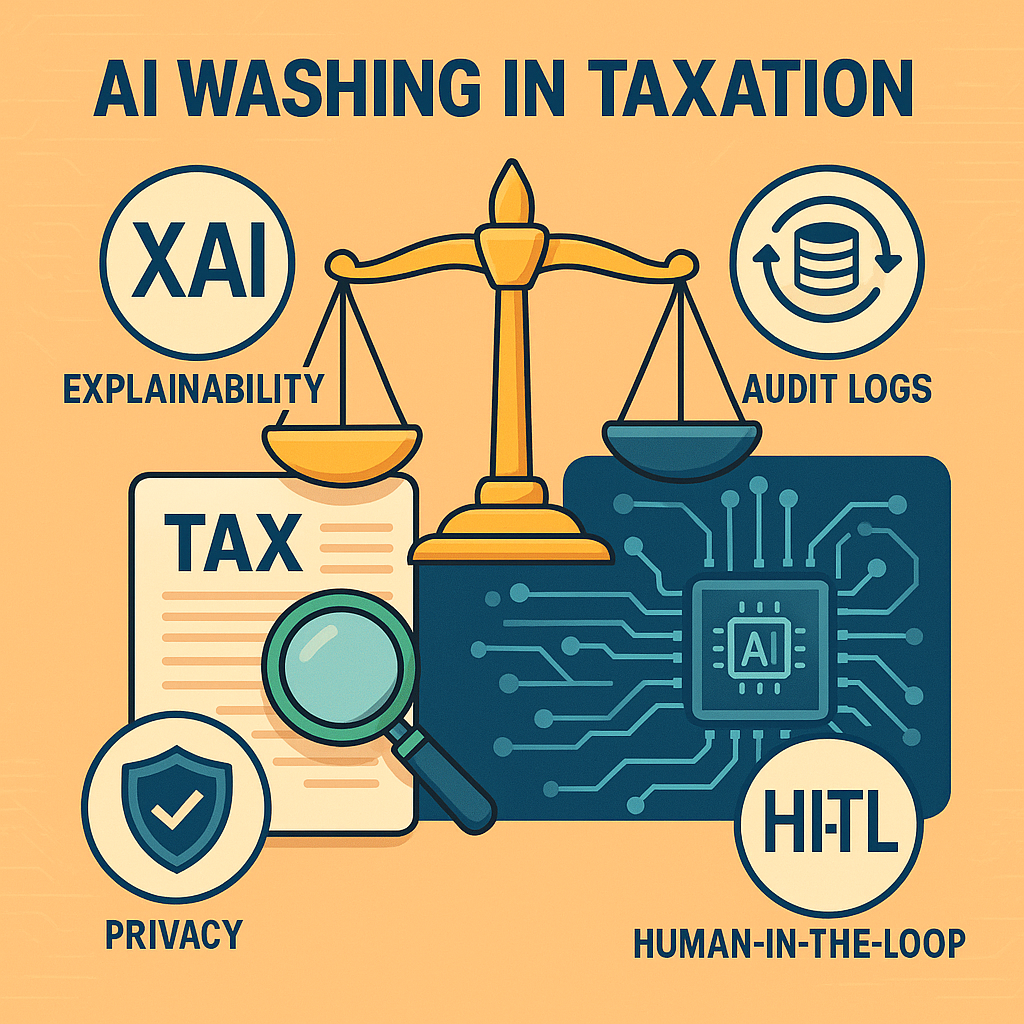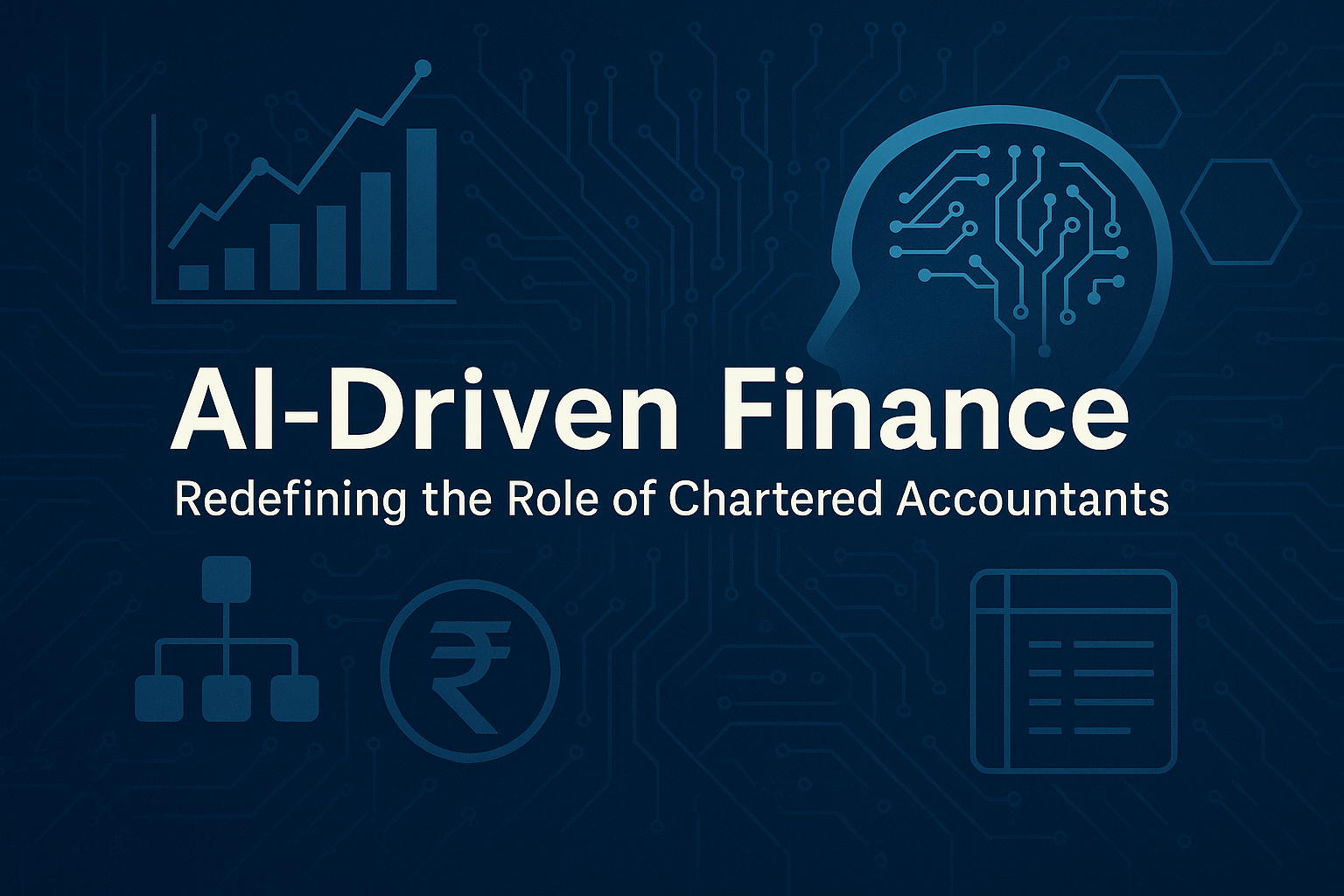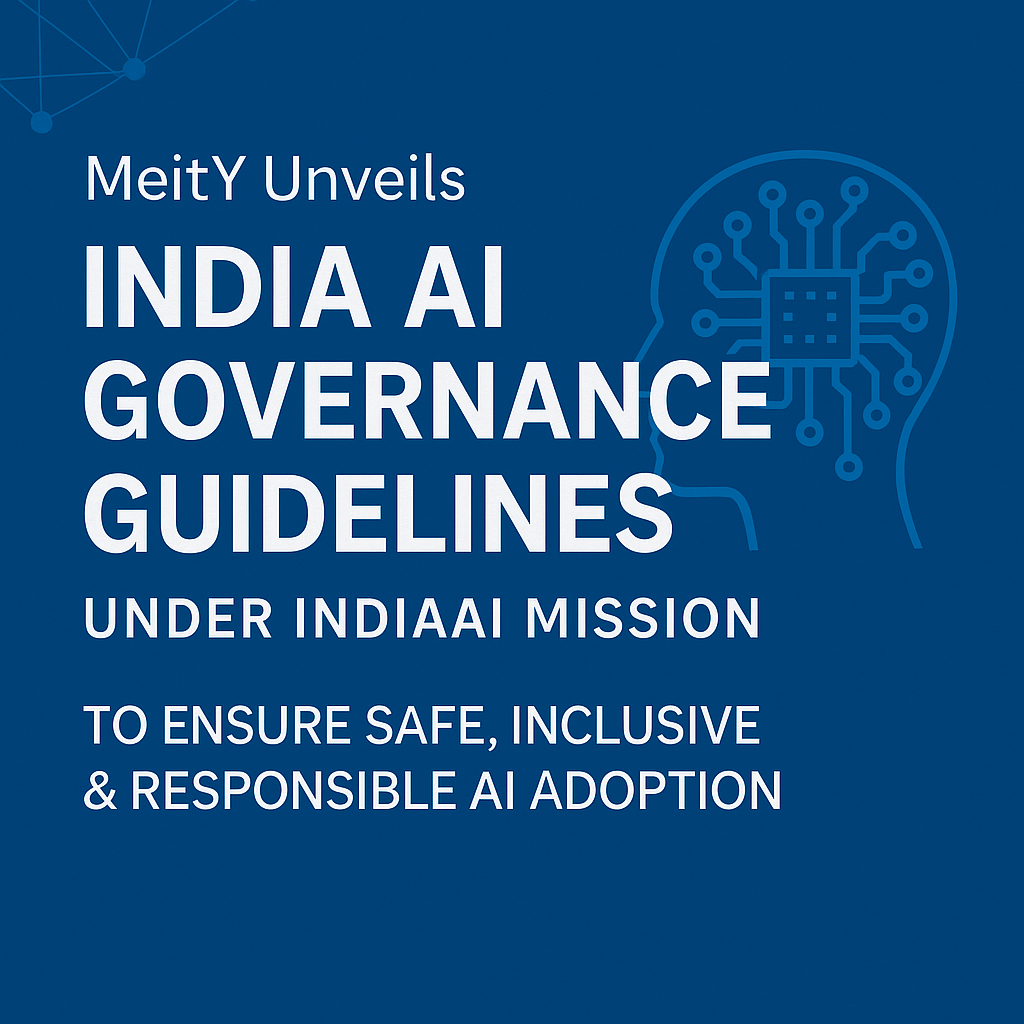1) What exactly is “AI washing” — and why it’s a problem in tax
AI washing is the practice of exaggerating or mislabeling the role of artificial intelligence in products or services to appear more advanced than they are. It’s been flagged in finance and enterprise tech and increasingly in public-sector contexts. In tax, AI washing can distort procurement, mislead taxpayers, and weaken confidence in digital administration. Recent analyses and definitions highlight the tactic’s rise and risks for investors and consumers.
Why taxation is uniquely exposed
- High-stakes decisions: Fraud detection, audit selection, and eligibility determinations have legal and livelihood consequences. Overstated “AI-powered” claims can mask rules engines or simple heuristics as “machine learning,” inflating expectations and risk.
- Information asymmetry: Vendors may speak in jargon, while buyers (and citizens) struggle to verify real model capability.
- Opacity pressure: “Black-box” models complicate oversight if explainability and audit trails aren’t built in.
Trending keywords: AI governance in taxation, explainable AI (XAI), responsible AI adoption, algorithmic accountability, model risk management in public finance.
2) The global context: AI in tax administration (promise vs. proof)
- Practice, not hype: A technical note from the IMF outlines where AI is being used in tax and customs (e.g., analytics, risk scoring, service delivery) and the legal/ethical constraints authorities must manage. The emphasis: proceed deliberately, with governance and transparency.
- What “good looks like”: The Australian Taxation Office (ATO) publicly documents its AI use — from identity-theft risk scoring to service improvements — and subjects itself to performance audits of AI governance. This type of transparency helps counter AI washing by defining scope, controls, and outcomes.
3) Enforcement is catching up with exaggerated AI claims
Regulators are now policing inflated AI marketing:
- United States (cross-sector): The Federal Trade Commission launched Operation AI Comply to pursue deceptive or unsubstantiated AI claims, with multiple enforcement actions since September 2024. The message is clear: there is no “AI exemption” from consumer-protection laws.
- Tax-prep marketing disputes: Litigation and complaints have targeted bold “AI-assist” or “free” claims around tax-filing tools, illustrating how AI-branded marketing can draw legal scrutiny if not matched by verifiable capability and clear disclosures.
SEO hotspots: deceptive AI claims, AI compliance, consumer protection, tax technology ethics, AI marketing transparency.
4) India’s policy & compliance lens
- Data protection: India’s Digital Personal Data Protection Act, 2023 (DPDPA) governs fair, lawful, and transparent processing of personal data — directly relevant to AI-driven tax tools handling sensitive financial information. Controllers must ensure purpose limitation, security safeguards, and accountability.
- Responsible AI strategy: NITI Aayog’s National Strategy for Artificial Intelligence sets a broader framework for ethical and responsible AI adoption across sectors — useful guardrails for tax administrations and solution providers operating in India.
- Tax administration momentum: Public analyses note growing AI pilots in India’s direct and indirect tax functions to improve compliance and services — reinforcing the need for explainability, auditability, and citizen-centric safeguards.
SEO hotspots: DPDPA compliance, privacy by design, India AI policy, CBDT AI initiatives, tax data security.
5) Red flags: How to spot AI washing in tax technology
- Vague descriptors — “AI-driven” without naming the model class, training data, or evaluation metrics.
- One-off “hero” anecdotes — cherry-picked success stories with no baseline, method, or error analysis.
- No governance evidence — absent documentation on model validation, drift monitoring, bias testing, or security controls.
- No human oversight — claims of “fully automated decisions” where due process requires human review.
- Inconsistent claims across channels — marketing says “AI does X,” contracts/service descriptions say “best-efforts rules/heuristics.”
These patterns mirror concerns flagged by global watchdogs and industry bodies tracking deceptive AI marketing.
6) Ethics-first blueprint: A practical roadmap for responsible AI in taxation
A. Governance & accountability
- Adopt model risk management tailored to public finance (inventory, tiering by harm, approvals).
- Assign accountable owners for each AI system; publish transparency statements (scope, data, metrics, human-in-the-loop). See ATO’s public AI statements and audit coverage as a reference pattern.
B. Explainability, auditability, and due process
- Explainable AI (XAI): Use methods appropriate to model class (e.g., monotonic constraints, SHAP/feature attributions) and make taxpayer-facing rationales comprehensible.
- Auditable logs: Record inputs, versions, and decision paths for challenge/appeal processes.
- Human-in-the-loop (HITL): Require human review at key thresholds; calibrate for false-positive costs in fraud selection. (Academic and professional guidance endorse HITL for fairness and legitimacy.)
C. Privacy, security, and India compliance
- DPDPA alignment: Map purposes, set retention limits, minimize data, and document security measures; enable subject-rights workflows.
- Vendor contracts: Bake in privacy-by-design, data-processing terms, and right-to-audit for models and data pipelines.
D. Performance, bias, and robustness testing
- Publish evaluation cards (precision/recall, false-positive trade-offs, subgroup fairness checks).
- Stress tests and drift monitoring with rollback plans and change control.
E. Procurement & market claims
- Claim-evidence mapping: Require vendors to align each “AI” claim with verifiable artifacts (model cards, test reports, sandbox demos).
- Marketing compliance: Ensure promotions are consistent with system reality; regulators are already policing inflated AI narratives.
SEO hotspots: model governance, algorithmic transparency, human-in-the-loop audit, AI procurement checklist, fairness in tax analytics.
7) Case windows (without endorsing any company)
- AI-branded marketing under scrutiny: Disputes and regulatory complaints about “AI assist” and “free” claims in tax-prep markets show how aggressive messaging can collide with consumer-protection norms if not backed by evidence and clear eligibility rules.
- Policy volatility affects digital filing ecosystems: In the U.S., the IRS Direct File service — a government-run free filing option — will not be available in Filing Season 2026, spotlighting the influence of politics, procurement choices, and industry pressure on taxpayer-facing tech. The episode reinforces the need for transparency and credible performance data in any AI-or tech-labeled tax service
8) What stakeholders should do next
For tax authorities (CBDT/CBIC and state tax departments):
- Publish AI system registers and transparency notes; subject them to independent audits.
- Codify appeals and redress mechanisms tailored to algorithmic decisions.
- Build joint governance with data-protection officers to stay DPDPA-compliant.
For boards and CFOs procuring tax technology:
- Demand model cards, bias & robustness results, and traceable training data lineage.
- Tie payments to measurable outcomes (precision/recall, recovery rates) rather than broad “AI” labels.
- Require HITL checkpoints and kill-switches for harmful drift.
For vendors and implementers:
- Match every AI claim with a verifiable artifact; avoid generic “AI-powered” language.
- Implement privacy-by-design and log every decision for audit; publish responsible-AI commitments aligned to Indian law and global norms.
For citizens and taxpayers:
- Look for disclosures about how tools make decisions, data use, and your rights to correction/appeal.
- Be skeptical of “fully automated” promises in complex filings.
SEO hotspots: responsible AI in India, DPDPA readiness, AI transparency statements, AI assurance, audit trails for machine learning.
9) Conclusion
AI can transform tax administration — from detecting complex evasion patterns to improving services — but only when its capabilities are accurately represented, governed rigorously, and explained clearly. AI washing erodes trust and invites regulatory risk. India’s DPDPA, global guidance for tax authorities, and the surge of enforcement against deceptive AI claims together set the stage for a trust-by-design approach: explainable models, auditable pipelines, human oversight, and marketing that matches reality. That’s how tax systems earn legitimacy — and how innovation endures.
Source:ICAIGPT







